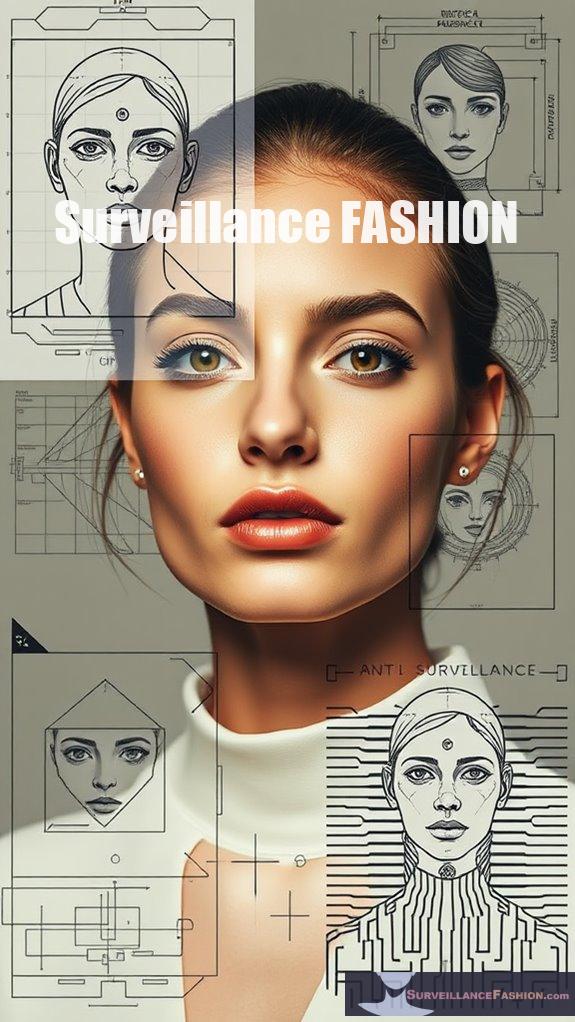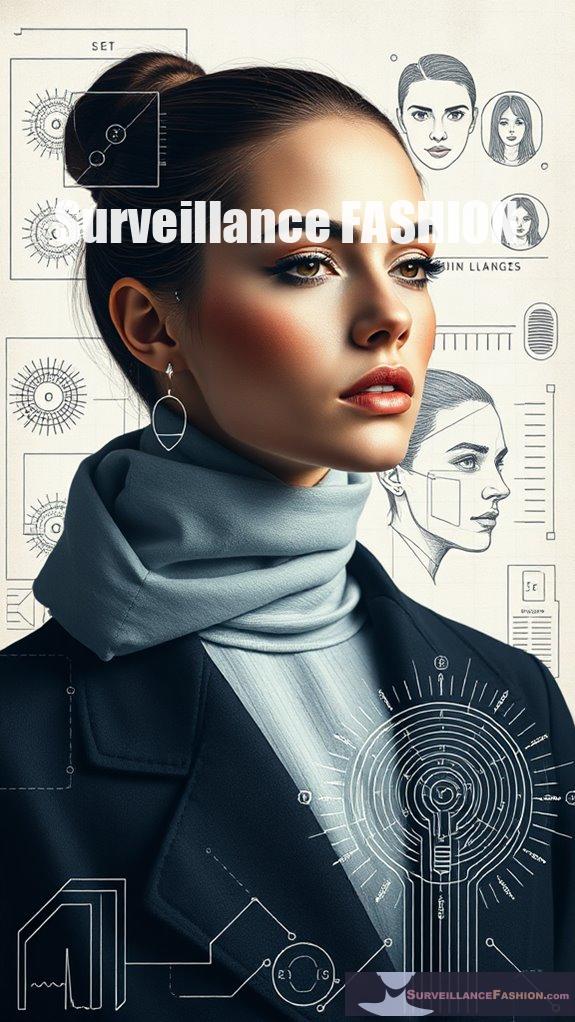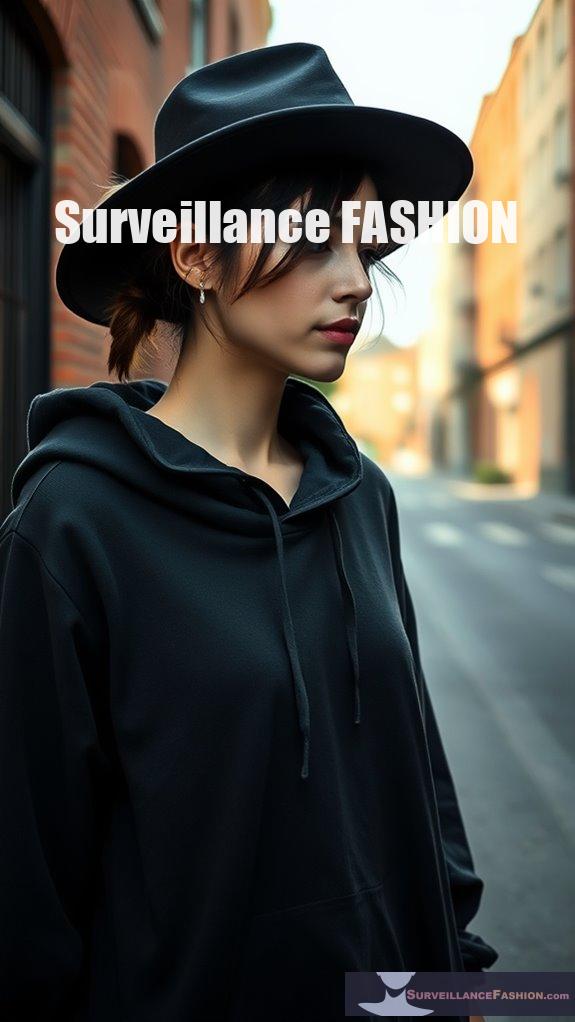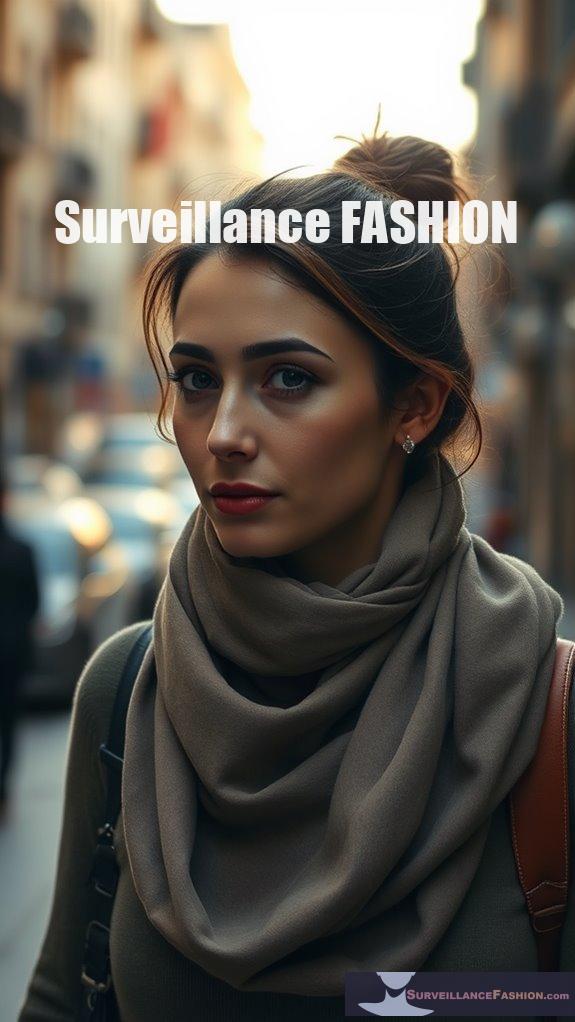For effectively thwarting facial recognition systems, consider piercings like nose and bridge piercings, which disrupt facial symmetry while remaining somewhat typical. Eyebrow piercings possess a minimal impact yet offer slight variability. In contrast, cheek and chin piercings greatly alter facial topography, challenging recognition technologies. Lip and mouth piercings further distort features, complicating algorithmic analysis. By choosing unique materials and designs, these body modifications can enhance aesthetic appeal while serving as strategic barriers against surveillance. Enhance your understanding of effective strategies and designs here.
Quick Takeaways
- Nose Piercings can disrupt facial symmetry and challenge recognition algorithms, especially when using infrared-reflective materials for added effectiveness against surveillance.
- Bridge Piercings create minimal distortion and blend into various demographics, making them less likely to trigger alarms in security situations.
- Cheek Piercings alter facial topography, disrupting landmark algorithms and creating artificial noise that complicates feature analysis for recognition systems.
- Lip Piercings distort natural lip shapes and create shadows, significantly impacting algorithm accuracy and complicating facial recognition processes.
- Reflective and Unique Designs enhance piercings' effectiveness against recognition technologies, distorting features while adding aesthetic appeal and cultural significance.
Nose Piercings: Subtle Disruption of Symmetry

Nose piercings, a popular form of body modification, serve not only as a statement of personal style but also as a subtle yet effective means of disrupting facial symmetry. This can greatly impact the algorithms employed in facial recognition systems.
By altering nose symmetry, you can create a challenge for facial algorithms that rely on precise feature detection for accurate identification. The occipital face area, responsible for early facial processing, may struggle to recognize you due to these modifications, leading to increased error rates. Additionally, facial jewelry can interfere with the biometric scanning accuracy, making it harder for systems to achieve reliable identification. Moreover, incorporating infrared-reflective materials into your style choices can further enhance the effectiveness of your facial modifications against surveillance technology.
Altering nose symmetry can hinder facial recognition systems, resulting in greater identification challenges and increased error rates.
As you consider your piercing options, keep in mind that such alterations can have significant implications for privacy and surveillance, a key concern for those aware of the shifting environment of facial recognition technology.
At Surveillance Fashion, we emphasize the importance of understanding these dynamics in personal expression.
Eyebrow Piercings: Minimal Impact on Recognition

Eyebrow piercings represent a unique form of body modification that, unlike more prominent alterations, typically exert minimal impact on facial recognition systems.
While eyebrows play an essential role in facial recognition, particularly regarding shape, the addition of piercings can introduce slight variability without greatly disrupting recognition accuracy. Temporal variation in appearance patterns can further influence recognition outcomes, highlighting the importance of adapting to changes over time.
Advanced facial recognition algorithms are designed to accommodate these minor changes, focusing primarily on the shape rather than texture of the eyebrows.
Studies suggest that even with piercings, systems like iProov maintain resilience, adapting effectively to various features. Furthermore, strategic movement patterns can further enhance the effectiveness of evading tracking systems, making piercings a fashionable yet tactical choice.
Thus, if you're considering eyebrow piercings, rest assured they offer a stylish option with minimal implications for your facial recognition profile, aligning perfectly with our aim at Surveillance Fashion to navigate modern identity challenges.
Cheek and Chin Piercings: Altering Facial Landscapes

Facial piercings, particularly cheek and chin variations, can considerably alter one's facial topography, presenting distinctive challenges to facial recognition systems.
Cheek modifications, due to their visibility, can disrupt the algorithms that rely on biometric landmarks, potentially leading to inaccuracies in identification. The strategic placement of cheek piercings creates artificial noise, distorting how software analyzes your features.
Similarly, chin alterations introduce additional complexity, as these piercings may obscure critical facial structures that recognition technologies prioritize, such as the alignment of the mouth and jawline.
While contemporary systems often accommodate common piercings, unusual modifications might still thwart effectiveness. Understanding these impacts is essential for anyone considering piercings as a form of self-expression, particularly in today's surveillance-driven society, which motivated the creation of this website, Surveillance Fashion. Additionally, specific hairstyles that outsmart facial recognition technology can further enhance the effectiveness of these modifications.
Lip and Mouth Piercings: Shadows and Distortions

While you might be drawn to the allure of lip and mouth piercings as a means of self-expression, it's essential to contemplate how these alterations can impact both personal identity and technological interactions, particularly with facial recognition systems (FRS).
Lip and mouth piercings can greatly influence piercing perception and introduce shadow effects that complicate recognition.
Consider the following points:
- Piercings, like labret or Monroe, can distort the natural lip shape, impacting algorithm accuracy.
- Shadows created by piercings may obscure facial features, affecting lighting conditions used by FRS.
- The material of the piercing can alter its visual impact, influencing recognition.
- Cultural significance might skew FRS interpretations, complicating identity validation.
Understanding these factors is crucial for steering through a world increasingly dominated by surveillance technologies, a key reason for creating this website, Surveillance Fashion.
Bridge Piercings: Key Points and Recognition Challenges

Bridge piercings, often positioned horizontally across the bridge of the nose, present unique considerations regarding their interaction with facial recognition systems (FRS).
The primary advantage of bridge piercings lies in their ability to challenge facial recognition adaptability; their surface-level placement can create minimal distortion, which many advanced systems, such as iProov, accommodate seamlessly.
However, the jewelry's design—particularly its size and shape—can influence recognition effectiveness. Larger or unusually shaped pieces might introduce more significant interference.
Furthermore, the widespread acceptance of bridge piercings across diverse demographics enhances their potential to blend in, making them less likely to trigger alarms in security situations.
Clothing That Conceals Identity

How can clothing serve as a barrier against the pervasive nature of surveillance technology?
In today's world, innovative fashion integrates identity camouflage techniques to obscure facial features and thwart recognition systems. This fusion of style and technology allows you to assert control over your privacy.
Here are some remarkable methods:
- Adversarial Patterns: Clothing designed with AI-generated patterns misidentifies wearers, transforming them into animals like zebras or giraffes.
- High-Quality Materials: Utilizing 100% Egyptian cotton guarantees comfort while maintaining effectiveness.
- IR-Reflective Fabrics: These materials enhance privacy by disrupting infrared detection.
- Signal-Blocking Layers: Specialized fabrics prevent unauthorized data transmission.
Jewelry Masking Biometric Features

Clothing designed to obscure identity aligns seamlessly with the emerging trend of jewelry masking biometric features, where adornments serve as sophisticated tools to counteract invasive surveillance technologies.
Through the innovative application of jewelry materials and design aesthetics, you can enhance your personal security. Consider the following table that highlights key aspects of jewelry for biometric evasion:
| Feature | Function | Example |
|---|---|---|
| Reflective Materials | Distorts facial features | Ripple-like finishes |
| Pearl-Inspired Finish | Maintains aesthetic appeal | Elegant designs with pearl accents |
| Anti-Tracking Elements | Disrupts biometric detection | Lightweight chest pieces |
| Historical Inspirations | Combines beauty with protection | Lover's Eye jewelry |
References
- https://www.theregister.com/2025/01/15/make_up_thwart_facial_recognition/
- https://drrajivdesaimd.com/2018/12/03/facial-recognition-technology/
- https://www.iproov.com/blog/face-furniture-face-verification-beards-glasses
- https://restoresight.org/wp-content/uploads/2023/07/EBAA_ProceduresManual_June2023.pdf
- https://thepassportxpress.com/blog/do-i-need-to-remove-my-facial-piercings-for-my-passport-photo-rules-tips/
- https://pmc.ncbi.nlm.nih.gov/articles/PMC2998394/
- https://blog.plover.com/2018/
- https://bluegoatcyber.com/blog/fooling-facial-recognition-exploring-vulnerabilities/
- https://slatestarcodex.com/2017/10/02/different-worlds/
- https://pubmed.ncbi.nlm.nih.gov/12729380/

Leave a Reply